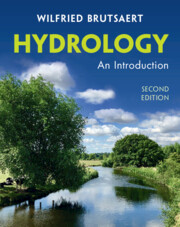Refine search
Actions for selected content:
83 results
Groundwater potential mapping in India: A review of approaches and pathways for sustainable management
-
- Journal:
- Cambridge Prisms: Drylands / Volume 2 / 2025
- Published online by Cambridge University Press:
- 03 November 2025, e12
-
- Article
-
- You have access
- Open access
- HTML
- Export citation
8 - Not a Drop to Drink
-
- Book:
- Regulating a Thousand Cuts
- Published online:
- 27 September 2025
- Print publication:
- 09 October 2025, pp 205-237
-
- Chapter
-
- You have access
- Open access
- HTML
- Export citation
10 - Freshwater Resources
-
- Book:
- International Environmental Law
- Published online:
- 19 September 2025
- Print publication:
- 09 October 2025, pp 326-380
-
- Chapter
- Export citation
9 - Water Scarcity
- from Part III - Application to Environmental Sustainability
-
- Book:
- Economics for a Sustainable World
- Published online:
- 14 July 2025
- Print publication:
- 12 June 2025, pp 260-291
-
- Chapter
- Export citation
Pleistocene periglacial paleohydrology reconstituted from sandstone morphologies in the Paris Basin, France
-
- Journal:
- Quaternary Research / Volume 126 / July 2025
- Published online by Cambridge University Press:
- 22 April 2025, pp. 27-41
-
- Article
- Export citation
3 - Chronicles from the Coast
-
- Book:
- The Water Diaries
- Published online:
- 06 February 2025
- Print publication:
- 13 February 2025, pp 36-56
-
- Chapter
-
- You have access
- Open access
- HTML
- Export citation
5 - Small Towns in Arid Lands
-
- Book:
- The Water Diaries
- Published online:
- 06 February 2025
- Print publication:
- 13 February 2025, pp 78-96
-
- Chapter
-
- You have access
- Open access
- HTML
- Export citation

The Water Diaries
- Living with the Global Water Crisis in Bangladesh and Kenya
-
- Published online:
- 06 February 2025
- Print publication:
- 13 February 2025
-
- Book
-
- You have access
- Open access
- Export citation
Estimation of Groundwater Residence Time Using Radiocarbon and Stable Isotope Ratio in Dissolved Inorganic Carbon and Soil CO2
-
- Journal:
- Radiocarbon / Volume 66 / Issue 2 / April 2024
- Published online by Cambridge University Press:
- 29 April 2024, pp. 249-266
- Print publication:
- April 2024
-
- Article
- Export citation
Properties of Goethite and Jarosite Precipitated from Acidic Groundwater, Dalarna, Sweden
-
- Journal:
- Clays and Clay Minerals / Volume 45 / Issue 2 / April 1997
- Published online by Cambridge University Press:
- 28 February 2024, pp. 261-273
-
- Article
- Export citation
Zeolitization of a Phonolitic Ash Flow by Groundwater in the Laach Volcanic Area, Eifel, Germany
-
- Journal:
- Clays and Clay Minerals / Volume 50 / Issue 6 / December 2002
- Published online by Cambridge University Press:
- 01 January 2024, pp. 710-725
-
- Article
- Export citation
7 - Data Assimilation in Hydrological Sciences
- from Part II - ‘Fluid’ Earth Applications: From the Surface to the Space
-
-
- Book:
- Applications of Data Assimilation and Inverse Problems in the Earth Sciences
- Published online:
- 20 June 2023
- Print publication:
- 06 July 2023, pp 112-130
-
- Chapter
- Export citation
Massive ground ice of glacial meltwater origin in raised marine-deltaic sediments, Fosheim Peninsula, high Arctic Canada
-
- Journal:
- Quaternary Research / Volume 116 / November 2023
- Published online by Cambridge University Press:
- 22 June 2023, pp. 96-107
-
- Article
-
- You have access
- Open access
- HTML
- Export citation
Irrigation pumps in late colonial Taiwan: Farmers’ utilization of technology and the transition to rice cultivation
-
- Journal:
- Modern Asian Studies / Volume 57 / Issue 6 / November 2023
- Published online by Cambridge University Press:
- 03 May 2023, pp. 1866-1902
- Print publication:
- November 2023
-
- Article
- Export citation

Hydrology
- An Introduction
-
- Published online:
- 01 March 2023
- Print publication:
- 23 February 2023
-
- Textbook
- Export citation
EVALUATION OF AQUEOUS GASTROPOD SHELLS AS GROUNDWATER RADIOCARBON PROXIES ACROSS SPECIES AND SITES
-
- Journal:
- Radiocarbon / Volume 65 / Issue 2 / April 2023
- Published online by Cambridge University Press:
- 24 January 2023, pp. 443-462
- Print publication:
- April 2023
-
- Article
-
- You have access
- Open access
- HTML
- Export citation
3 - Sources and Availability of Water
- from Part I - Fundamentals
-
- Book:
- Irrigation Engineering
- Published online:
- 05 August 2022
- Print publication:
- 07 July 2022, pp 44-55
-
- Chapter
- Export citation
DETERMINATION OF THE TOTAL 14C CONCENTRATION OF WATER SAMPLES USING THE COD METHOD AND AMS
-
- Journal:
- Radiocarbon / Volume 64 / Issue 5 / October 2022
- Published online by Cambridge University Press:
- 15 June 2022, pp. 1065-1074
- Print publication:
- October 2022
-
- Article
-
- You have access
- Open access
- HTML
- Export citation
Achieving Groundwater Governance: Ostrom's Design Principles and Payments for Ecosystem Services Approaches
-
- Journal:
- Transnational Environmental Law / Volume 11 / Issue 2 / July 2022
- Published online by Cambridge University Press:
- 17 May 2022, pp. 381-406
-
- Article
-
- You have access
- Open access
- HTML
- Export citation
Reconstructing postglacial hydrologic and environmental change in the eastern Kenai Peninsula lowlands using proxy data and mass balance modeling
-
- Journal:
- Quaternary Research / Volume 107 / May 2022
- Published online by Cambridge University Press:
- 15 March 2022, pp. 1-26
-
- Article
- Export citation
